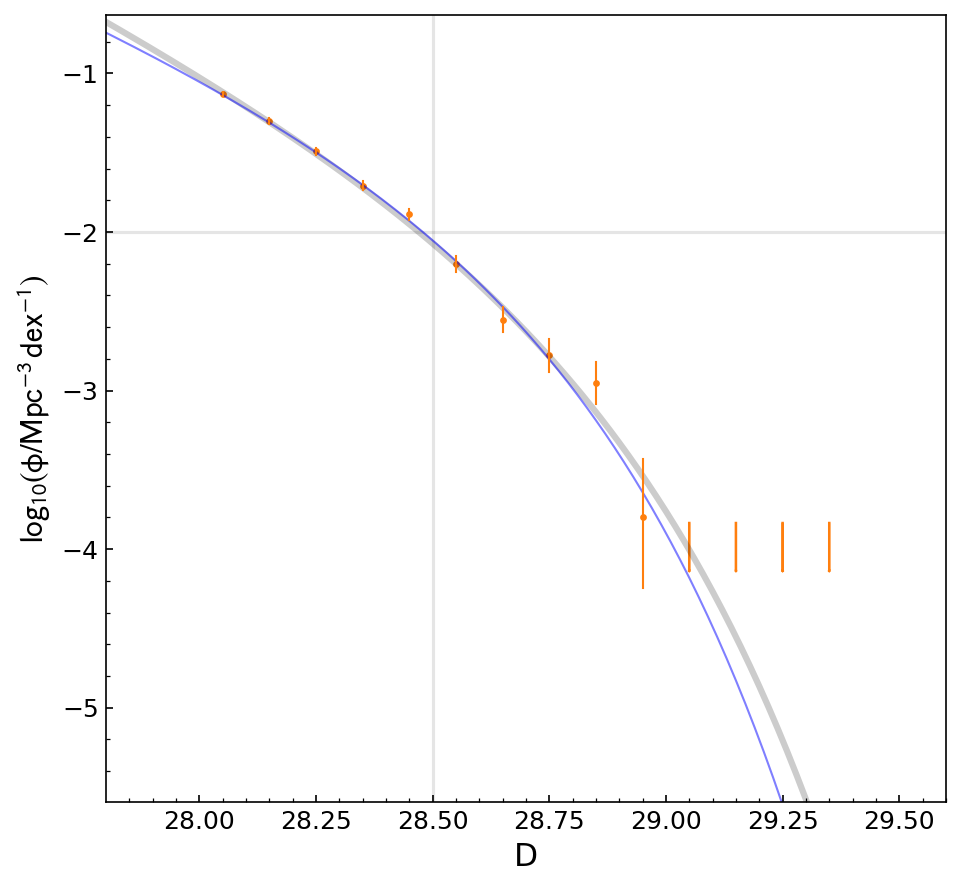Example usage¶
In this tutorial we’ll demonstrate using fitDF on a galaxy luminosity function. First, we can generate some fake observational data (counts per luminosity bin) by running
python generate_fake_observations.py
This produces two files, fake_observations.json and input_parameters.json, which contain the counts and the chosen input parameters, respectively.
Now we can run our fit:
python example_fit.py
this performs MCMC to fit the observations using a single Schechter function model (identical to that used in the data generation). Once the sampling is complete, two plots are produced. triangle.png shows a triangle (corner) plot of the posterior parameter distributions, with the original parameters shown as the horizontal lines on each marginal distribution.

LF.png shows the fitted luminosity function. The original and fitted functions are both shown, as well as the original data.

You can experiment with the contents of example_fit.py. For example, try changing the number of samples or burn-in period, or even adjust the prior parameter distributions. example_fit.py can be used as a template for your own projects.